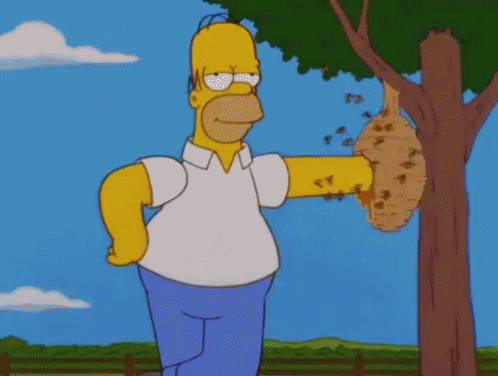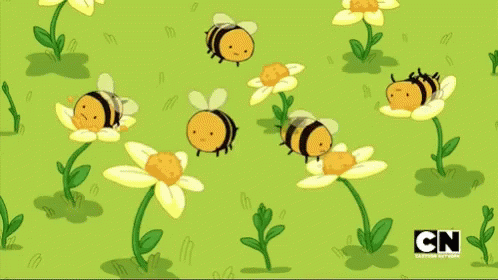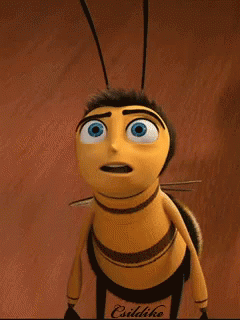Introduction
On the outside, a bees' nest looks like a simple place where bees are flying in and out and going about their daily business. However, the bees' nest is really a complicated interconnected network where each bee has a job to do in order to contribute to the collective of the hive. Have you ever wondered how bees work together in order to produce honey? Each bee belongs to one of three groups within the hive, with each group having a specific job to do. Let's take a look at some of the work done by each of the three castes: the workers, the drones, and the queen.
Workers
Workers are the largest of the three castes, consisting of 85% of the hive. These are the bees that are responsible for leaving the hive to collect pollen and nectar and are also responsible for various tasks around the hive, including feeding the queen, drones and larva, and making beeswax. How are these jobs divided up between the workers, you may ask? They are divided by age! Worker bees, at some point in their short 506 week lives, will likely end up participating in all tasks in the hive.Worker bees start off as an egg in a part of a honeycomb. Then, the first task they are assigned is to clean out the part of the honeycomb where they grew. They then are given the task of nursing bees, which means they have to help feed newly hatched larva and keep them warm. Then, as the bee ages, they will begin to do some housekeeping around the hive. There is so much for these bees to do, including storing nectar and pollen, building honeycomb, guarding the entrance, and they are even responsible for warming the hive if it gets too cold. Then, the worker will become a forager, after around 20 days old which means they are the ones that will leave the nest to collect nectar, pollen, and any other resources the hive may need. Workers will be foragers until they die, about one month after they are born.
Fun fact: All worker bees are females. However, they are infertile and are unable to produce offspring of their own due to a pheromone released by the queen.
Another fun fact: Worker bees live longer in the winter since they spend more time inside the hive, keeping it warm instead of going out and gathering supplies.

Drones
Drones are the male bees, and their purpose in life is to mate with the queen. They have no foraging tools nor do they have stingers, but they are equipped with large eyes to help them find the queen to mate with. Therefore, they depend on the workers to feed them and keep them alive. There aren't too many drones in a hive, since a queen only needs to mate once. Any eggs that the queen lays that are unfertilized will become drones. When a drone mates with the queen, they die.Fun fact: A drone's eyes are almost twice the size of a worker bee's.

Queen
There is only one queen bee in a hive. The queen lays the eggs of every bee born in the hive and she influences the bees in her hive using pheromones, which are chemicals that are released into the hive. How does the hive determine when an egg is to become a queen bee? The process starts when the hive begins to become full or when the ability of the queen to lay eggs diminishes. Workers will build special cells that hang off a honeycomb, where the existing queen will lay some eggs, and the larvae in these cells are fed royal jelly. It is important that the queen mates with multiple drones before she lays eggs in order to assure genetic diversity in the hive. Once the new queen is established, she goes cell-to-cell and stings all the other queen bee cells, and a battle ensues between them. The winner becomes the new queen. Then the old queen, some workers and drones leave the hive and find a site for a new one.Fun fact: The queen is the largest bee in the colony.

Communication
So how do workers, drones, and the queen all communicate to ensure all of the jobs are done and that everything in the hive is running smoothly? There are a couple of methods of communication, including...Pheromones: The queen gives off a pheromone that allows her to communicate with the bees in the hive. The pheromones are what keep the worker bees from being able to produce viable offspring, and are also what attract the drones to mate with her, and also signal to the hive that she is doing well. Pheromones do much more than this; they can also alert the hive if there is a threat. If one bee stings something, the rest of the worker bees are alerted to the threat with pheromones. There are two types of pheromones, the primer pheromones that are released by the queen to ensure everything that stays as it should, and the released pheromones which are released by the workers in response to events.
Movement: The workers may perform a series of movements to teach other workers the location of food sources away from the hive. The movement series is known as the "waggle dance" and the distance and speed indicate the distance of the food source, and the way the bee aligns their bodies is indicative of the direction of the food source.
For more information, check out these links:
- https://www.perfectbee.com/learn-about-bees/the-life-of-bees/inside-and-out-of-the-beehive
- https://bees.techno-science.ca/english/bees/life-in-a-hive/worker-bee.php
Works Cited
- https://en.wikipedia.org/wiki/Pheromone
- https://www.perfectbee.com/learn-about-bees/the-life-of-bees/role-queen-bee
- https://www.thoughtco.com/how-honey-bees-communicate-1968098
- https://www.perfectbee.com/learn-about-bees/the-life-of-bees/inside-and-out-of-the-beehive
- https://bees.techno-science.ca/english/bees/life-in-a-hive/worker-bee.php
Thanks for reading!
- Megan M.

0 comments:
Post a Comment